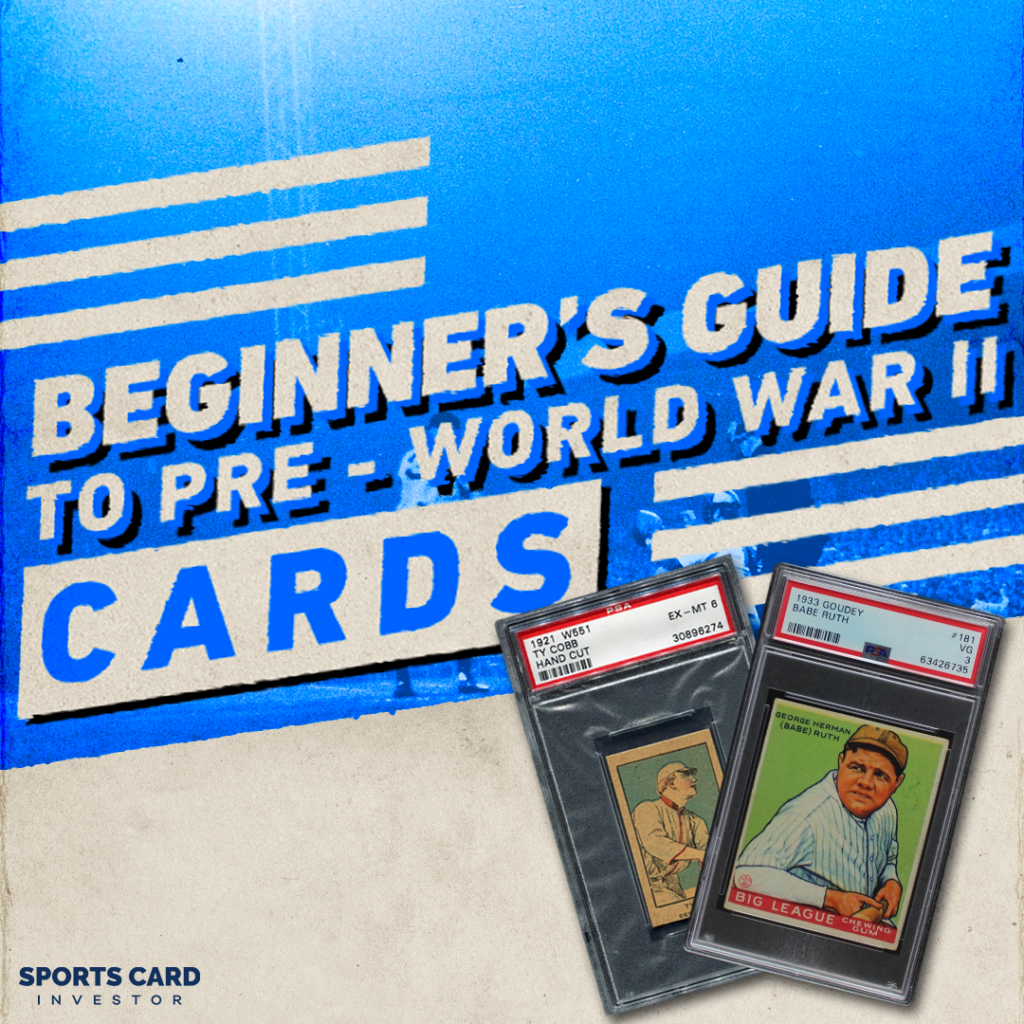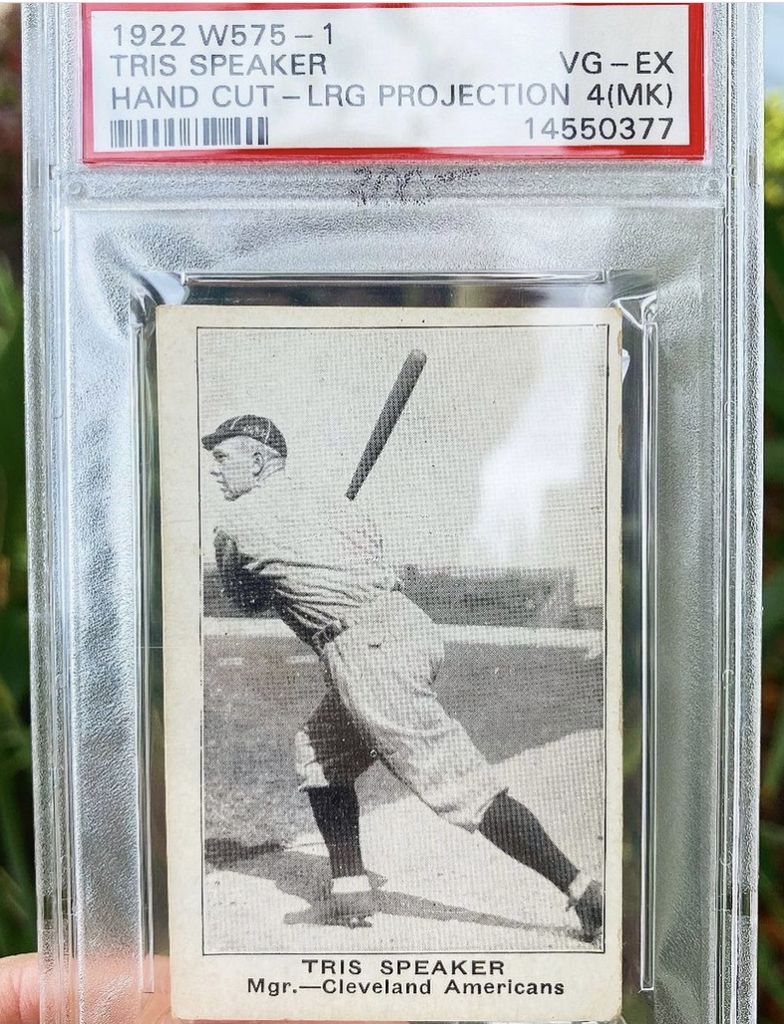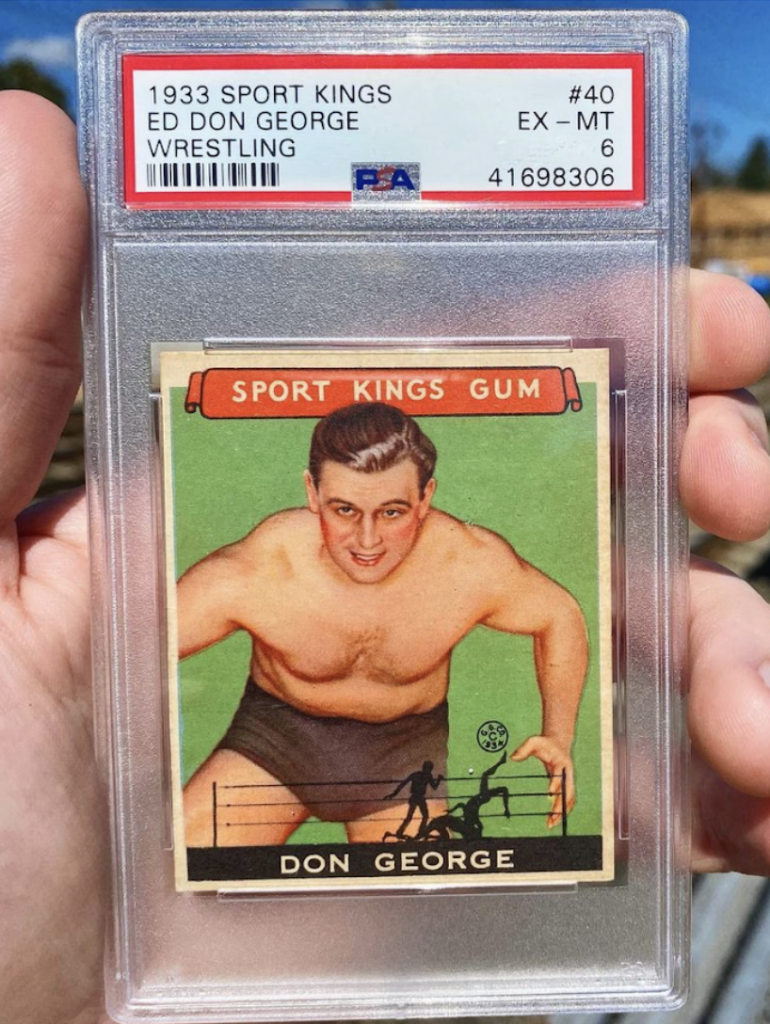
Beginner’s Guide To Pre-World War II Cards
For this third article in our pre-war baseball card series (19th century and pre-war), we’ll focus on cards produced after World War I but before the start of World War II. During this era, we saw the end of legendary careers of players like Babe Ruth, Ty Cobb and Walter Johnson and the start for icons like Ted Williams, Joe DiMaggio and Bob Feller.
In the 1920s, there were two primary cards produced – American Caramel and various strip cards. Tobacco cards were being phased out to favor candy.
American Caramel’s first baseball releases in the ‘20s were the E121 and E120 sets. Just like T205 and T206, the set numbers didn’t necessarily line up with the years produced. E121 was a 1921 release while E120 was in 1922. To complicate things even more, there were other sets that borrowed the E120/121 Caramel design like the strip cards from W575 and Neilson’s Chocolate.

Think of strip cards like those found in Sports Illustrated for Kids. They were attached in large sheets and the cards had to be ripped or cut out. As a result, grading these has proven tough because if they were cut too small, they wouldn’t get a numeric grade; instead, they were simply labeled as “Authentic.”
Additionally, many collectors avoid strip cards altogether because they aren’t the best looking designs. Compare a W551, for example, to almost any tobacco card produced in the 1910s. There is a major difference.
Another downside to strip cards is their lack of defined years and the different codes needed to memorize their names. Is it a W551 or W515? Even wilder, W590s have release dates that can range anywhere from 1925 to 1931.
But one of the more interesting aspects of strip cards was that they often included important figures from other sports and pop culture. The 1926 W512, for instance, had Ty Cobb with Jack Dempsey (boxing), Walter Hagen (golf) and Charlie Chaplin (acting).
In 1933 we saw an explosion of gum-based baseball cards. Goudey, Delong and Tattoo Orbit all produced sets that year. While all were stellar releases, the Goudey stands out.
The company created two important sets that year. One focused solely on baseball while the other, Sports Kings, featured Ruth and Cobb alongside the biggest athletes of the era in other sports like Red Grange (football), Eddie Shore (hockey) and Don George (wrestling).

Goudey would continue to produce cards from the ‘30s up until WW2. Its 1938 Heads Up release should be worth mentioning as many collectors gravitate towards DiMaggio and Feller’s cards. Many consider these to be rookies though both have earlier releases from other brands like Zeenut and O-Pee-Chee. All are extremely rare cards that fetch a good amount of money. Good luck finding them at a card show, though. I have yet to see them in person, even after attending 52 events last year.
In 1939 Gum Inc. created the Play Ball baseball brand. Before then, Gum Inc. was known for non-sports releases like Horrors of War and G-Men. While Play Ball lasted only three years (‘39-’41), it still featured the iconic rookie card of Williams as well as early cards of DiMaggio. It also has an intriguing 1940 card of Joe Jackson. This was his first card since the ban for the Black Sox scandal.
Gum Inc. would go on to produce cards again after the war’s conclusion. This time, however, it would be under a name that most collectors know today: Bowman… But we’ll get into that more next time.
Ryan Nolan writes about vintage cards and other topics for Sports Card Investor. He also runs Breakout Cards and is the co-host of Moneyball Cards. Follow him on Twitter and YouTube for more content.
Track your collection and maximize your profit with Market Movers, the hobby’s most powerful sports card pricing platform! Learn more here.
Note to readers: If you purchase something through one of our affiliates, we may earn a commission.






